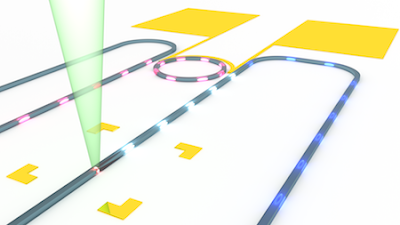Ideally, optical circuits would generate and shuttle light so well that researchers could use them to transmit encoded information, sense chemical species, and perform quantum computations. But because the components for each circuit—light sources, mirrors, splitters, filters, and waveguides—occupy several feet of table space, they cannot manipulate light down to the nanoscale. In an effort to downsize components and produce practical quantum photonic devices, researchers have been tinkering with nonlinear materials, atomic defects, and traditional semiconductors at the nanoscale.
Now Ali Elshaari at KTH Stockholm and his colleagues have taken a major stride by embedding circuit components on a CMOS-compatible chip that takes up a millionth the area of a tabletop apparatus. The key innovation was implementing precise control over quantum dot light sources, which emit photons in specific quantum states, including entangled ones, when excited by lasers. Scientists had struggled to control the dots’ emission and integrate the dots with waveguides for on-chip applications. Elshaari’s team devised a special geometry that optimized the alignment of the dots’ light emission with the fundamental waveguide mode, which resulted in high coupling efficiencies. To control the emission, an electrically tunable device acted as a spectral filter that could fine-tune the photon characteristics.
Manipulating quantum light on a chip, Katyayani Seal, Physics Today

Comments